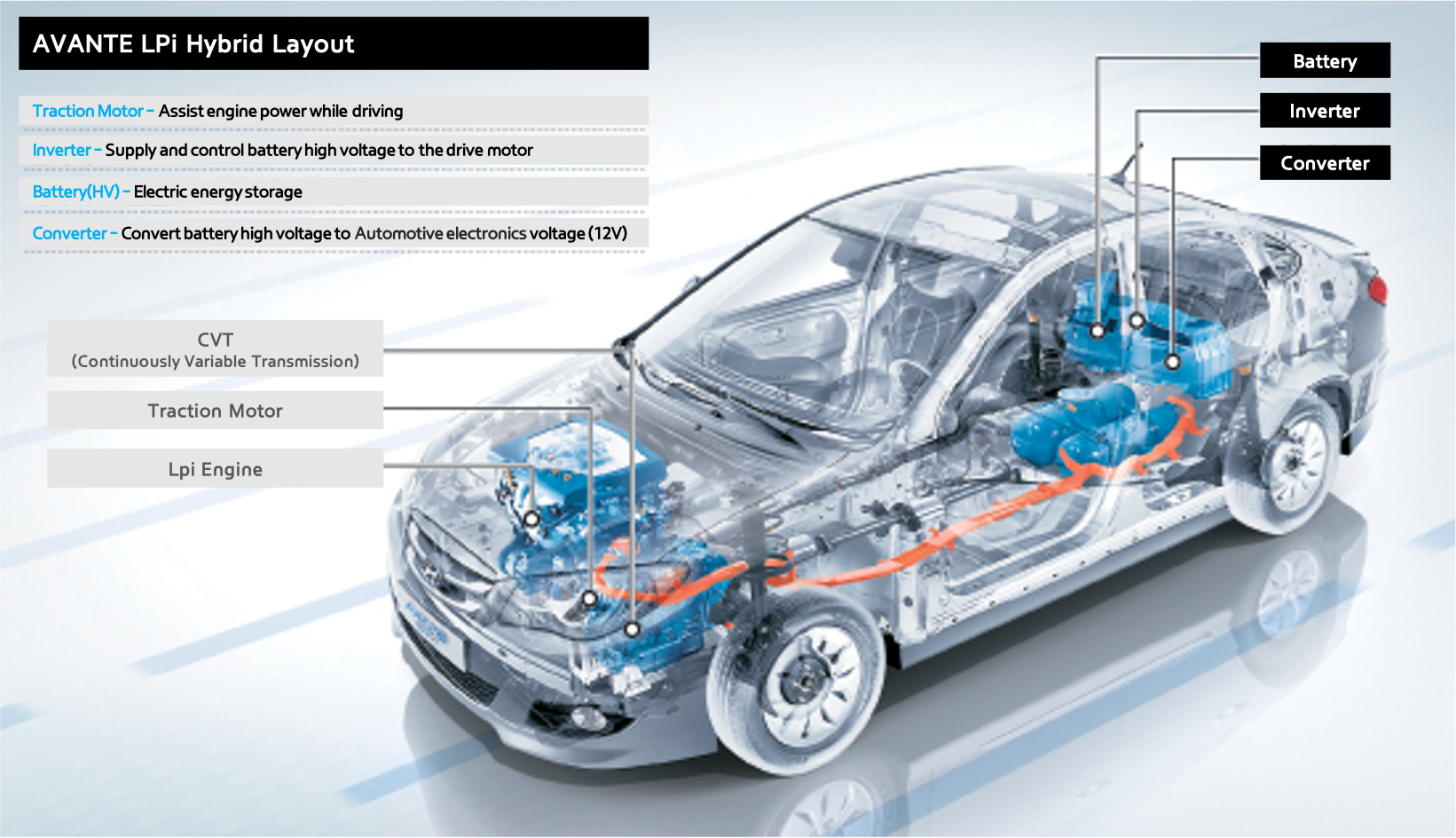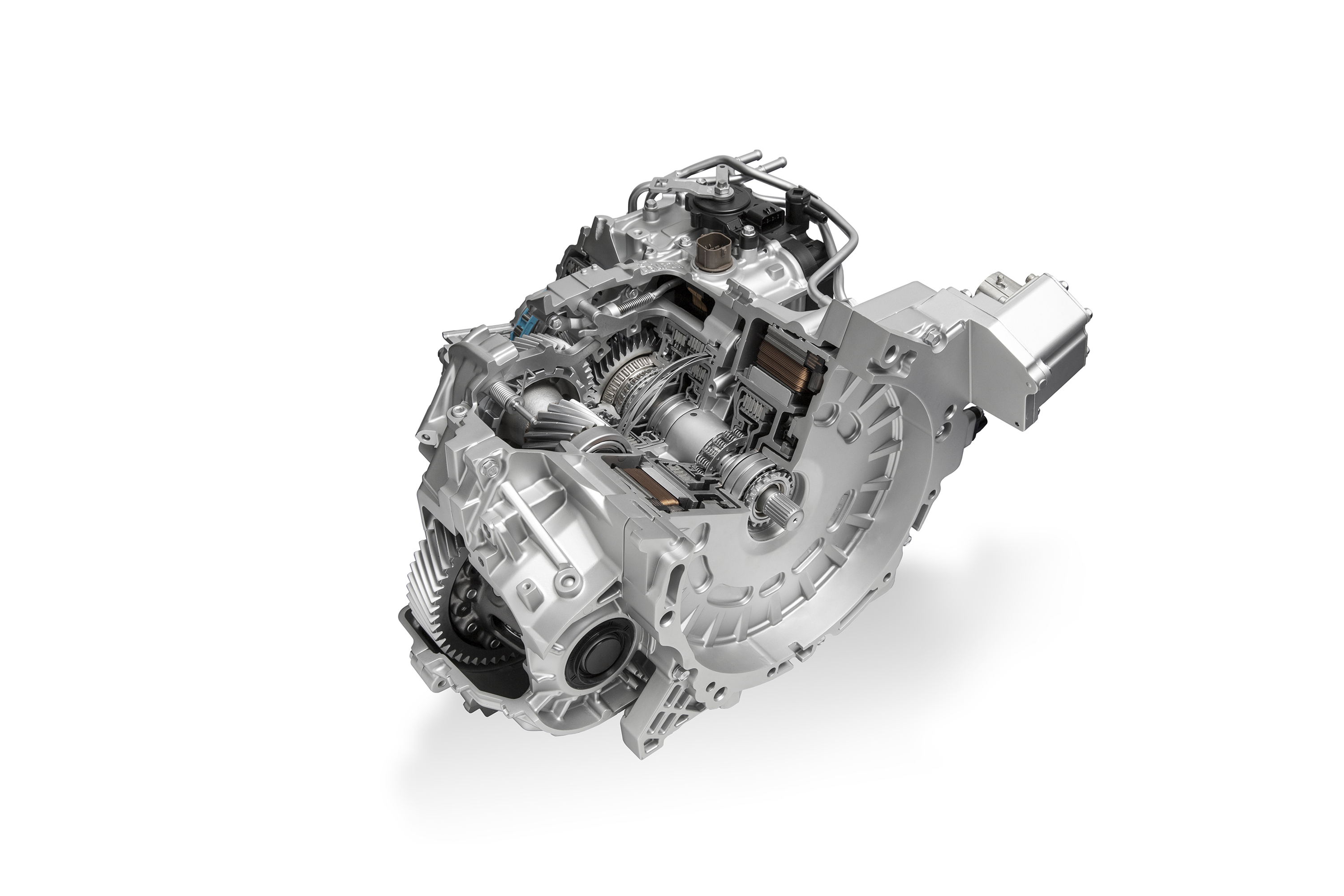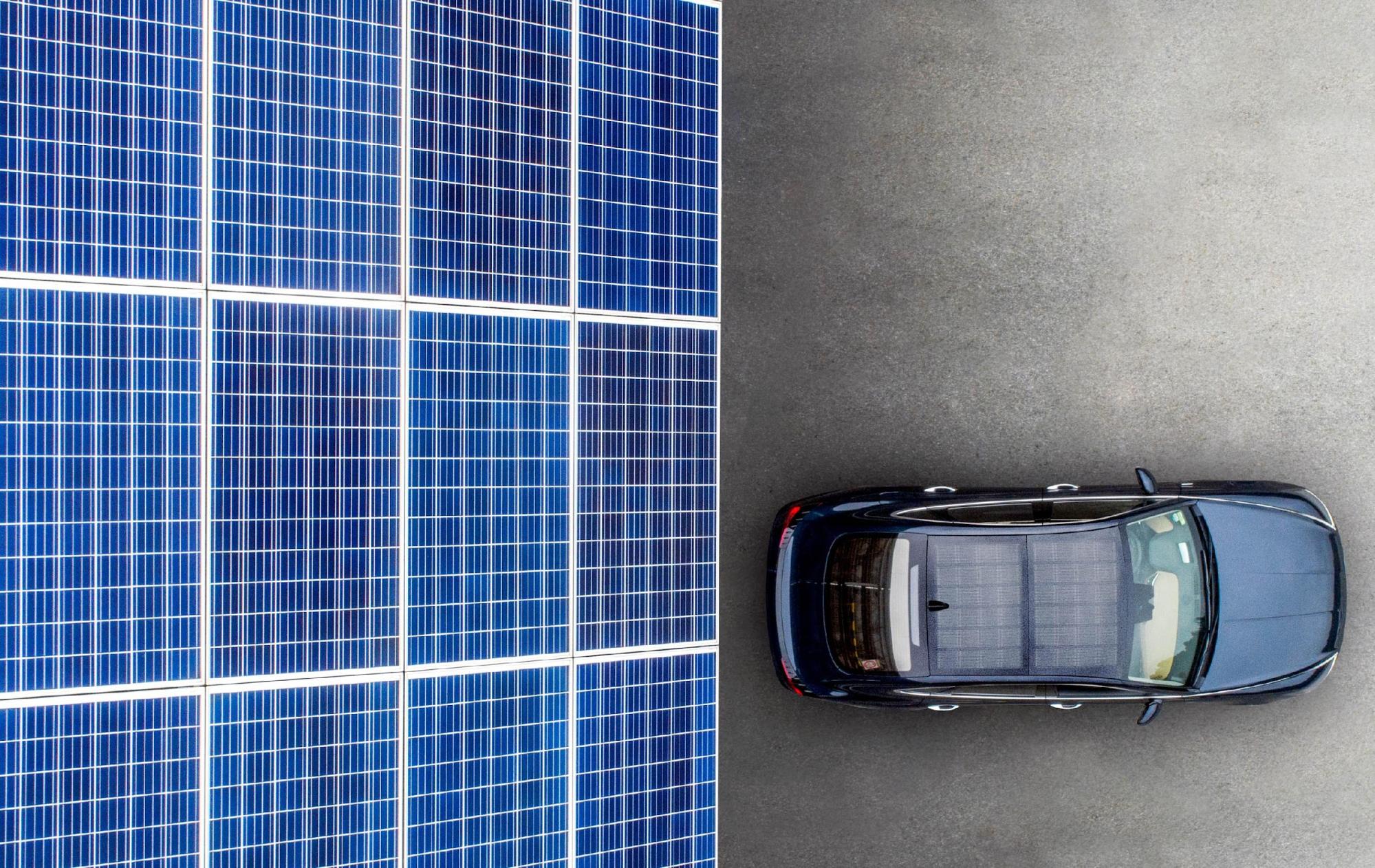Perhaps the biggest development in the car industry in recent years is the hybrid boom. According to the Korea Automobile & Mobility Association, of the 1,749,279 cars newly registered in Korea last year, 390,898, or 22.3%, were hybrids. This is a leap of 42.5% from the year before. The popularity of hybrid cars is strong this year as well. The number of Korean eco-friendly cars sold domestically in the first quarter of 2024 was 101,700, an 8.7% increase year-on-year. Of those, 85% were hybrids.
One reason why hybrids are so popular is a plateau in the growth of the electric vehicle (EV) market, which was rapid. The fact is that many EV owners experience inconveniences, chief among them having to keep their EVs charged. Hybrids, on the other hand, provide both the convenience of the internal combustion engine car and the green benefits of the EV. Also, with hybrid owners qualifying for government-subsidized benefits such as tax deductions and congestion toll exemptions, it’s no wonder hybrid cars are so popular. But the real reason consumers like hybrids is not the convenience or the benefits. It’s how far hybrid cars have come.
Hybrid car technology has advanced consistently, in line with people’s need for environmental protection and reduced fuel use. The newest hybrid cars use their engines less and their electric motor more, another major appeal to consumers looking to save on fuel.
Hyundai and Kia are both leaders in hybrid car technology. Over the years they have released a wide range of hybrid models, each the culmination of the years of development that helped to popularize hybrid cars. Hybrid car technology has come a long way, thanks in no small part to technological advances made by Hyundai, as demonstrated by the Grandeur and Sonata, both top sellers for the Korean carmaker.
How the Hybrid Was Born

The birth of the hybrid car dates back to the early 20th century. In fact, the Lohner–Porsche Mixte, developed by Ferdinand Porsche and Jacob Lohner in the early-1900s, is regarded as the world’s first hybrid vehicle, as it included a gasoline engine and four electric motors.

The dawn of the 20th century saw monumental developments in the world of cars. It was around then the switch from steam engines to internal combustion engines took place. It’s amazing to think that a hybrid car with a gasoline engine and electric motors actually existed 120 years ago.

But it wasn’t until 1997, when Toyota launched the Prius, that a carmaker actually made a profit from selling hybrid cars. Checking the boxes for both fuel economy and environmentalism, the Prius truly was a motoring innovation that put the hybrid car on the map.
The reason it took 100 years after the Lohner-Porsche Mixte for hybrid cars to see a wide market was inadequate technology. The battery in the Lohner-Porsche Mixte took too long to charge, and added substantial weight to the vehicle. The terrible drive power and efficiency of the electric motor in the Lohner-Porsche Mixte rendered the first hybrid car unviable.
The first-generation Prius was equipped with a nickel-metal battery. At the time, nickel-metal batteries were one of the best options for hybrid cars due to their high energy density and rapid charging. With the Prius, Toyota inspired a great deal of confidence and interest in hybrid cars in consumers. Sales of the first-generation Prius began in 2000 in North America, Europe, and other global markets, making the car the pioneer in the hybrid car market.
Hybrid Car Technology Development by Hyundai and Kia

In the mid-2000s, Hyundai and Kia started to make focused investments in hybrid car technology. In 2009, Hyundai entered the market for hybrid cars with its Avante LPi Hybrid. Powered by LPG and a lithium battery, the Avante LPi Hybrid is the world’s first LPG hybrid car, a Hyundai innovation.

The Avante LPi Hybrid is a green, economical car, and one which diversified hybrid car technology. It played an important role in Hyundai achieving competitiveness in the hybrid car market.
Hyundai went on to release the Sonata Hybrid in 2011, marking the beginning of the mass production of gasoline-electric hybrid cars by the carmaker. The lineup of Hyundai hybrids that followed highlight how the carmaker’s hybrid car technology has evolved.
First-generation Hyundai Hybrid: Sonata Hybrid 2011–2014

The first-generation Sonata Hybrid is a parallel hybrid car powered by a hybrid-exclusive 2.4L Theta II engine and a 30 kW electric motor. Energy density and efficiency are enhanced by a 1.43 kWh lithium-ion polymer battery, which was chosen over a nickel-metal hybrid battery for its lighter weight and greater energy storage capacity.
The first-generation Sonata Hybrid was Hyundai’s first mid-size hybrid sedan, and has been regarded as an important contribution to the popularization and performance enhancement of hybrid car technology. Equipped with both fuel economy and eco-friendliness, the first-generation Sonata Hybrid became a symbol of the potential and marketability of the hybrid car. The Sonata Hybrid is a cornerstone of Hyundai’s hybrid and electric vehicle technology development.
Second-generation Hyundai Hybrid: Sonata Hybrid 2015-2019

The LF Sonata Hybrid is powered by an upgraded 2.0L Nu engine and a 38 kW electric motor. It has a larger 1.62 kWh lithium-ion polymer battery, and a hybrid-exclusive six-speed automatic transmission manufactured by Hyundai Transys.

In developing transmissions for hybrid cars, Hyundai Transys strives for efficiency. Hybrid cars are driven by engine output and electric motor torque, and store the energy generated from regenerative braking in a battery to be reused by the electric motor. In such a complex layout, it is the job of the transmission to achieve optimal efficiency. For mechanisms and electricity to work in harmony to produce power at a minimal energy consumption, a transmission designed specifically for hybrid cars is required.

With a Hyundai Transys hybrid-exclusive six-speed automatic transmission in place, the torque converter traditionally performed by the automatic transmission in an ICE vehicle is performed by the hybrid motor. This configuration allows for a more efficient control of the high torque generated by the engine and motor. When EV mode or hybrid mode is activated, engine power to the transmission is connected and disconnected as needed by the engine clutch, resulting in a smooth power conversion without any change in ride comfort.

Ultimately, the transmissions in hybrid cars need to control the engine and the motor concurrently, while maintaining high output density and efficiency. This is a feat that requires advanced technology and years of experience with transmissions. With the hybrid transmissions supplied by Hyundai Transys, Hyundai was able to further improve the fuel efficiency as well as the battery efficiency and lifespan of its hybrid offerings.
Third-generation Hyundai Hybrid: Sonata Hybrid 2020-2022

The DN8 Sonata Hybrid is powered by a hybrid system which combines a 2L engine and a 39 kW electric motor. The engine was downsized, while the battery received an upgrade to 1.76 kWh.
At the time, the standout feature of the DN8 Sonata Hybrid was its solar panel roof. Solar panels totaling 204 W in capacity were installed on the roof to charge the battery. A 5.8-hour charge daily gets you enough energy to travel 1,300 km a year.

Hybrid cars self-generate energy. They are driven by their engines, and the kinetic energy that results is stored in their batteries. Hybrids are environmentally friendly but not totally so because they still have to operate built-in engines, which require fuel.
Hyundai sought to move on from the traditional method of charging batteries solely through regenerative braking. By placing solar panels on the roof, the largest area of the car body, the DN8 Sonata Hybrid generates energy even when the car is still. The solar panel roof makes it a green car capable of self-generating energy without any carbon dioxide emissions.
Fourth-generation Hyundai Hybrid: Grandeur Hybrid 2023-Present

The latest Grandeur Hybrid is powered by a 1.6L turbocharged engine and a 44.2 kW electric motor. The biggest change is the turbo engine. The addition of a turbocharger to an engine with a lower displacement helps achieve a maximum output of 180 HP. With the electric motor, the total maximum output is around 230 HP. The GN7 Grandeur Hybrid boasts a dramatically improved energy recovery efficiency thanks to its advanced battery technology and upgraded regenerative braking system.

Hyundai’s fourth- and current-generation hybrid technology can be found in the Grandeur, Santa Fe, Tucson, and Kia Sorento. The Santa Fe Hybrid is equipped with a battery that Hyundai designed in-house for increased energy density and optimal performance, which is achieved by its maximized nickel content.

Another innovation in the Hyundai hybrid system is the e-Motion Drive technology. This technology goes beyond just having the electric motor handle propulsion; it aims to minimize changes in ride quality and traction, enhance steering responsiveness, and ensure swift and stable driving. With the e-Motion Drive technology, Hyundai has shown that hybrid systems can even improve driving stability and ride comfort, while reducing the impact that the car has on the environment.

Hyundai's current fourth-generation hybrid system boasts optimal efficiency and high safety standards, receiving positive feedback from consumers. For this reason, the Santa Fe Hybrid, Grandeur Hybrid, and Sorento Hybrid remain some of the best selling hybrids in the market.
Hybrid Cars are Key to the Sustainability of Automotive Technology Advancement

It's been said that the hybrid car is just a stepping-stone to the fully electric car. The newest hybrids have smaller engines, with a greater role being played by the battery and electric motor. If the role of the engine continues to diminish, what we get is an EV.
But right now, there is still great demand for hybrids. Hybrid car technology is quite intricate. A hybrid car has to smoothly and stably execute both a complex mechanical process of intake, compression, explosion, and exhaust, and a simpler electrical process of charging and discharge.

Hyundai and Kia have developed a portfolio of hybrid car technologies to reduce fuel use and emissions that includes an electronic control system for increased braking efficiency, a battery developed in-house for increased battery efficiency, and a solar panel roof for additional emissions reduction. The newest hybrids from Hyundai and Kia come with navigation system-linked smart regenerative braking. With this, regenerative braking fluctuates automatically based on factors such as road gradient, traffic, and speed cameras. These are all cutting-edge technologies.
Since the launch of the Avante Hybrid in 2011, Hyundai and Kia emerged as leaders of hybrid car technology through innovative technological advances and a lineup of well-received hybrid models. The Sonata Hybrid and Grandeur Hybrid are regarded as a hybrid motoring innovation achieved through years of development, which explains why they are selling in large numbers.

As hybrid car technology continues to advance, hybrid cars will become more and more efficient. We can expect more innovations like the e-Motion Drive technology in the future. Until the fully electric vehicle becomes the norm, the popularity of hybrids will persist.
■ Automotive Journalist Lee Jin-woo
'Global' 카테고리의 다른 글
| The Core of Hyundai Transys Leading the Era of Electrification Lies Here (0) | 2024.08.02 |
|---|---|
| The Hyundai Transys Dongtan Seat R&D Center Leading the Evolution of Automotive Seating Technology (0) | 2024.06.24 |
| PBVs, a New Paradigm of Future Mobility (0) | 2024.06.13 |
| Sustainable Automotive Seat Materials (0) | 2024.05.10 |
| There’s Something About the Seats in a Genesis (0) | 2024.04.26 |



